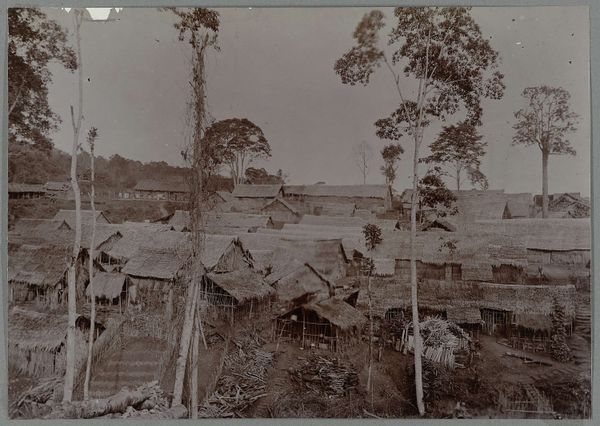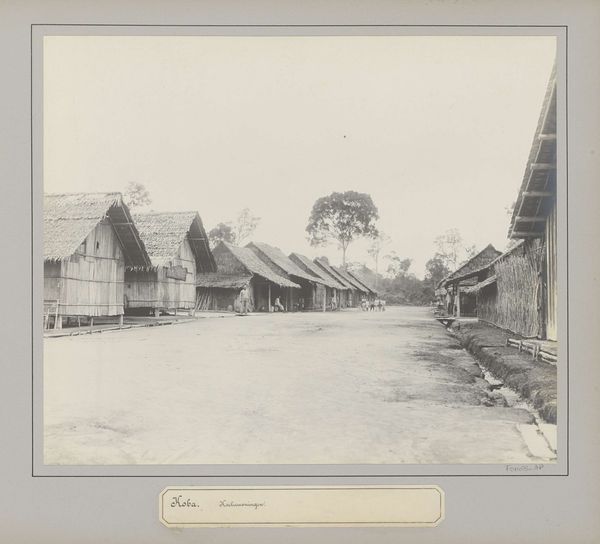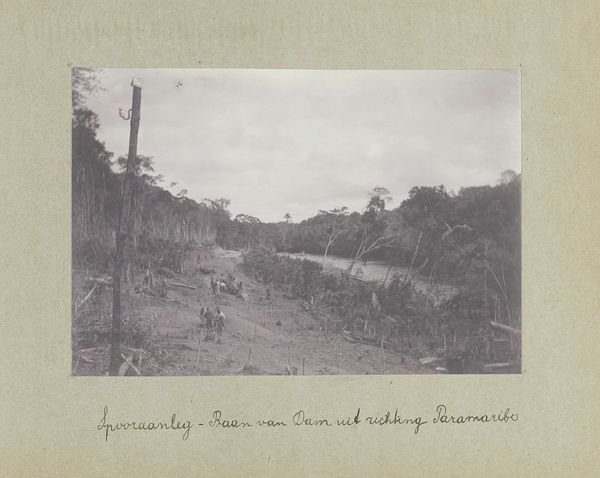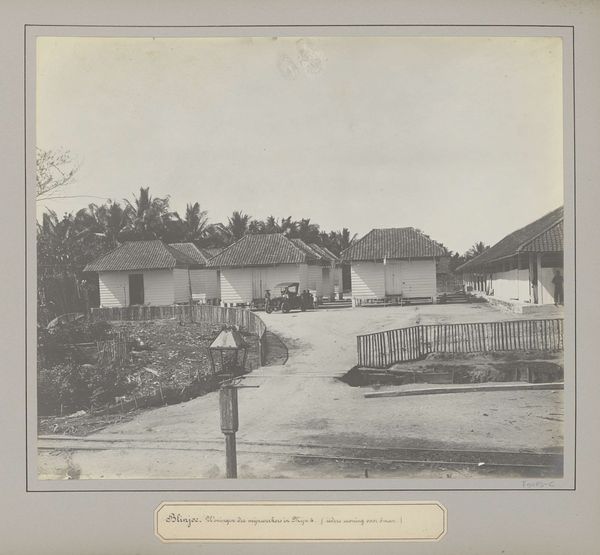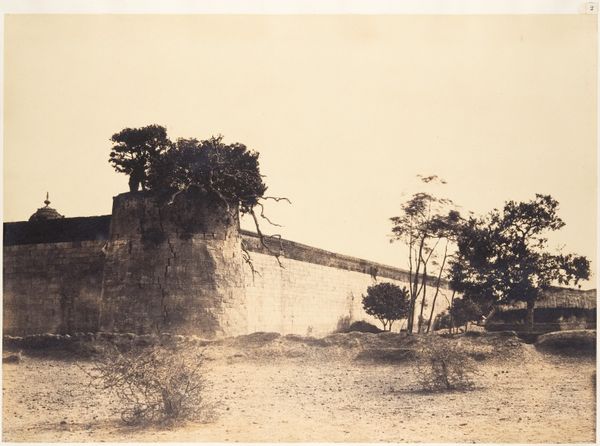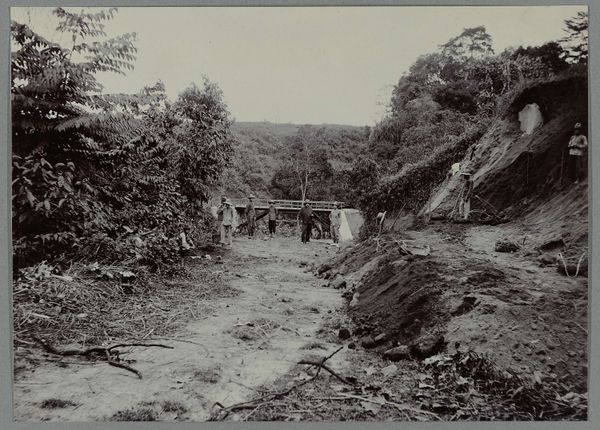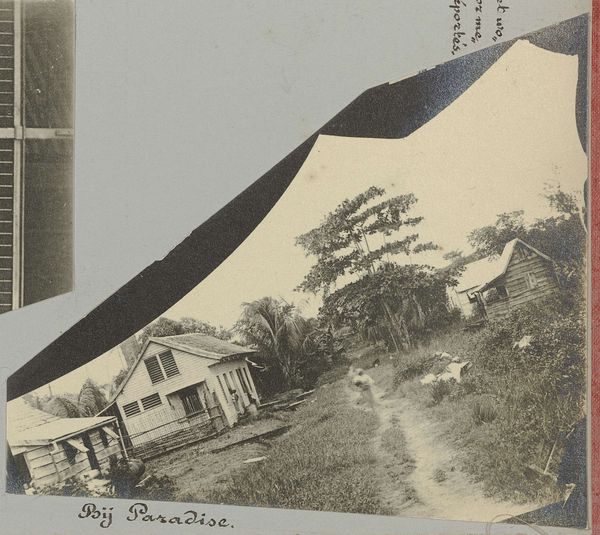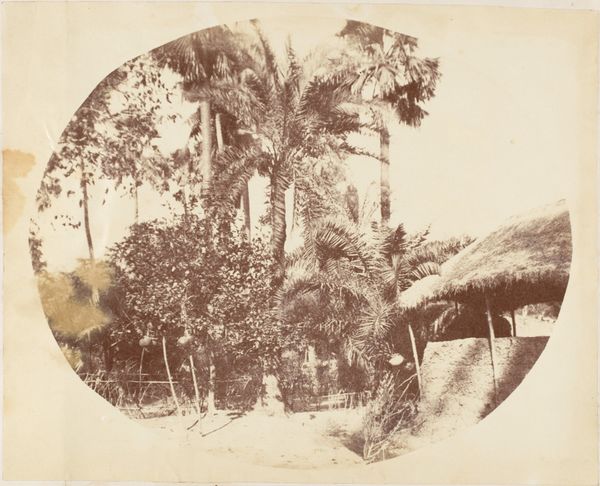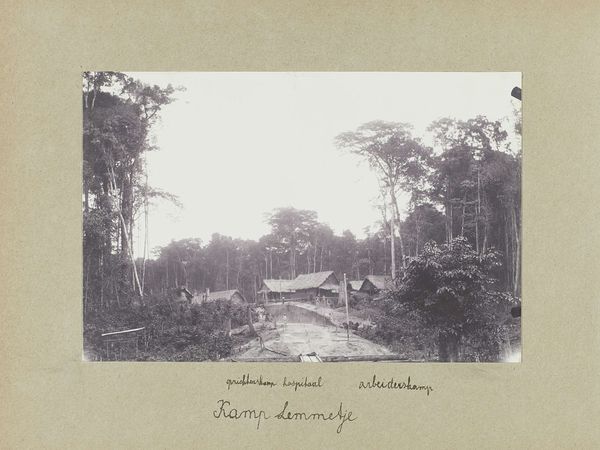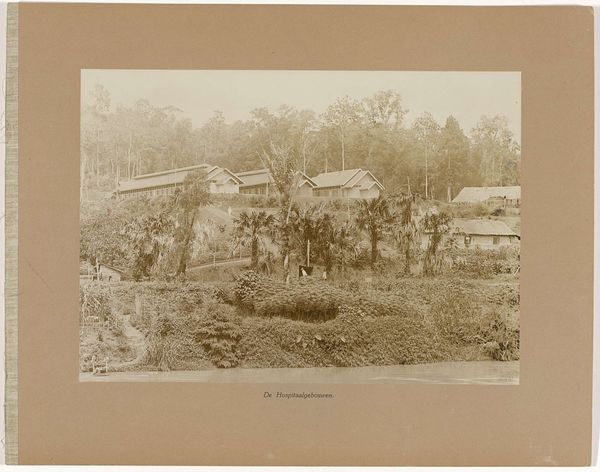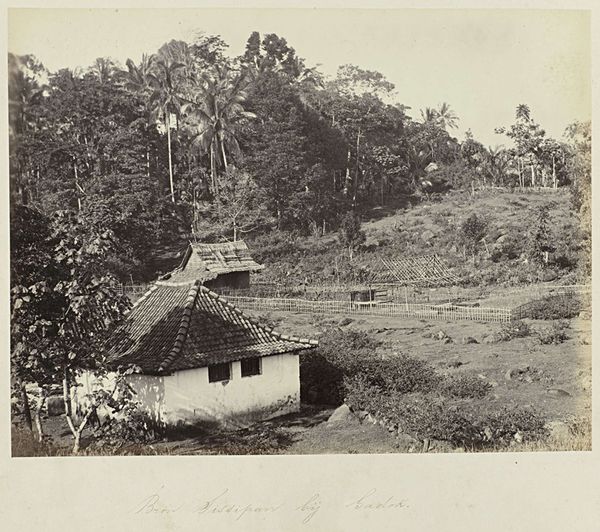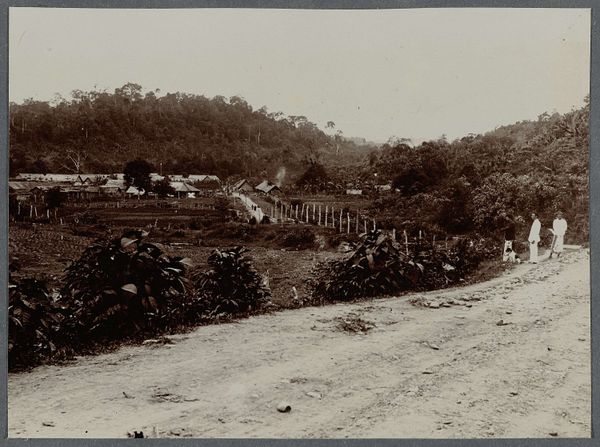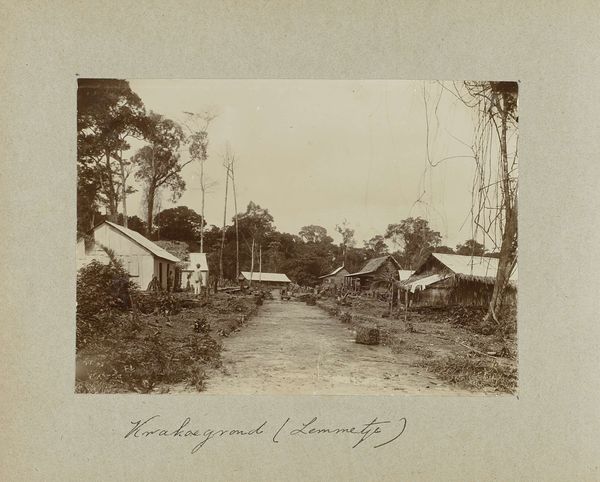
photography, gelatin-silver-print
#
african-art
#
landscape
#
indigenism
#
archive photography
#
photography
#
historical photography
#
gelatin-silver-print
Dimensions: height 102 mm, width 169 mm
Copyright: Rijks Museum: Open Domain
Curator: I'm immediately struck by the somber mood of this photograph; there's an isolating silence to the way the light filters through the trees. Editor: That's an interesting take! This gelatin silver print, captured sometime between 1905 and 1910, shows the Sikakamp from Dam towards Paramaribo. The photographer, Jacob Evert Wesenhagen, documented this landscape, a fascinating intersection of Indigenism and nascent industrial impact. Curator: I see what you mean. It’s not untouched wilderness; there's that very prominent, somewhat jarring, building structure—and what looks like construction… a bridge, perhaps? I keep feeling a lingering colonial weight, not explicitly stated, but implied in the photograph’s details. Editor: Absolutely. This image tells a story far beyond its surface. Photography during this period was heavily entangled with colonial projects—it functioned as a tool to both document and control colonized spaces. Consider, who was this image intended for? How does that shape the narrative presented? Curator: That brings a critical dimension; it's not just seeing the Sikakamp, but seeing it through someone else's imposed lens. Suddenly the photograph reads as an almost ethnographic study, framed by power. The "natural" is juxtaposed against these new structures that symbolize very well how the land was perceived as raw material by the western people Editor: Indeed! Wesenhagen, knowingly or not, contributes to this visual archive that rationalized colonial expansion. And photography allowed the image to travel and to make those foreign spaces "known" and available. Curator: The perspective of seeing the landscape from dam to Paramaribo could potentially signal this perspective too, an outsider perspective trying to show and record their occupation. Editor: And so we’re left to untangle its implications—a seemingly straightforward landscape photograph brimming with political, historical, and emotional layers. It forces us to acknowledge the subjective role of the photographer, not just as a recorder but as a participant. Curator: I agree. It's a silent image that shouts volumes once we listen carefully.
Comments
No comments
Be the first to comment and join the conversation on the ultimate creative platform.
